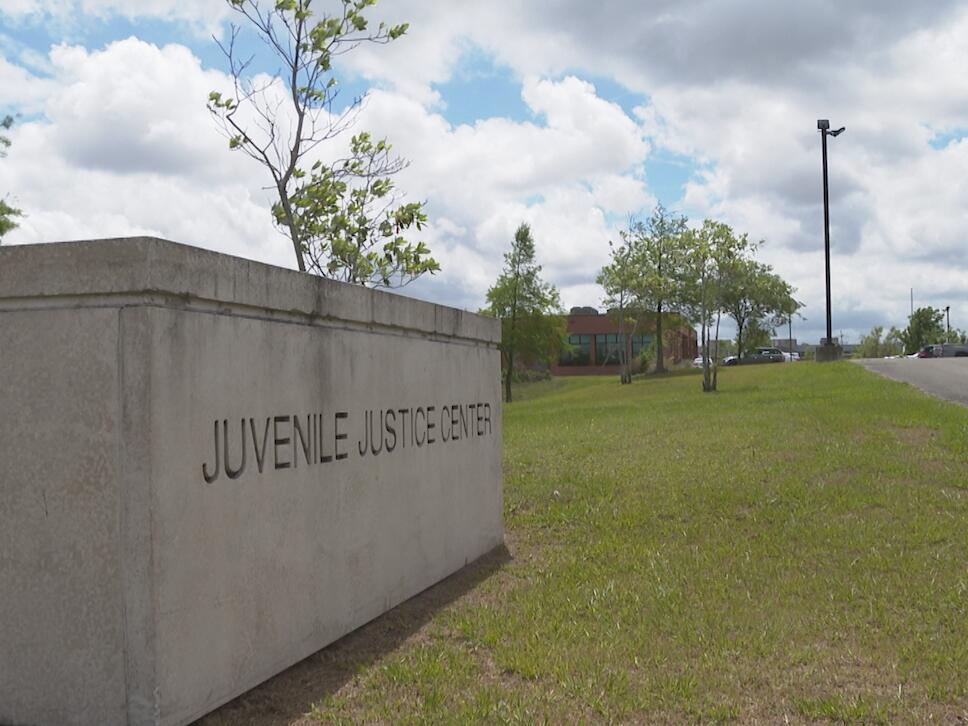Section Branding
Header Content
Racial disparities in youth incarceration are the widest they've been in decades
Primary Content
When Jazmyn Taitingfong was a juvenile public defender, she saw firsthand how certain kids were criminalized for just being kids. She remembers one child who was accused of damaging property while playing in a park. When the police arrived, she says, they handcuffed all the children there.
"Obviously it's anecdotal from my experience, but those were always young Black children," says Taitingfong, now a staff attorney at the ACLU of New Mexico. "They're perceived to be older, to be less innocent. Girls are perceived, again, to be older and more sexualized."
Studies show children of color are treated more harshly in the justice system than their white peers, and federal data released last month suggests that disparity is widening — especially for Black and American Indian children.
'Youth of color are just not given the leniency.'
In 2023, the most recent year for which data is available, Black children were nearly six times more likely to be incarcerated than white children; American Indian children were nearly four times more likely.
"This is the largest Black-white disparity on record. This is the largest Native-white disparity on record," says Josh Rovner, director of Youth Justice at the Sentencing Project, a research and advocacy organization working to reduce incarceration in the U.S.
Rovner and other criminal justice experts stress that there are not huge differences in the racial backgrounds of kids who commit crimes. But there are differences, he says, in which neighborhoods are heavily policed, making an arrest more likely. In other words, a poorer Black neighborhood will likely have more police patrolling it than a wealthy white suburb.
Once a child is arrested, Rovner says the disparities often accumulate even further, from who is offered a diversion program, to who stays in detention until their hearing, to who gets probation.
"We see that youth of color are just not given the leniency or the common-sense responses that white youth are given," Rovner says. "The off ramps that exist throughout the system are much more available to white youths who are similarly situated than to Black youth."
'We've now finally got the kids who need to be there.'
Perry Moriearty, associate professor at the University of Minnesota Law School specializing in juvenile justice, says the growing disparities are in part because youth incarceration rates are actually far lower than they were a few decades ago.
The Sentencing Project estimates that from 2000 to 2022, there was a 75% decline in youth incarceration. Those rates have crept back up post-pandemic, but they remain low.
Certain policies, like diversion programs, have helped reduce the youth detention population, but juvenile justice experts say kids today also just commit fewer crimes than they used to.
"When we reduce incarceration overall, writ large, disparities often go up," Moriearty says.
People often assume, Moriearty says, that when you reduce incarceration for all children, those who remain are only the ones who really needed to be in detention.
"What you would often hear is 'We've now finally got the kids who need to be there,'" she says. "I disagree in a really fundamental way with that premise. The kids who remain are often the kids with more complex needs. They are not the kids who are inherently more dangerous or who are less redeemable. They are kids we could reach in other ways. And the reality is, we've chosen not to."
Black children spend more time in detention
The children that prosecutors and judges have decided should be held in custody are often disproportionately children of color, Moriearty says.
Data suggests those children are also staying in detention for longer periods of time.
"Youth are being released more slowly from detention, and Black youth are being released much more slowly from detention once they've been detained," says Nate Balis, director of the Juvenile Justice Strategy Group with the Annie E. Casey Foundation, which tracks juvenile incarceration patterns.
That can have lasting consequences.
"The longer young people stay in detention, the less likely they are to, for example, enroll in school, far less likely to ever graduate, more likely to be rearrested than young people who are not detained," Balis says. "They're more likely to be involved in the adult system when they get older."
A 2021 study found young people with a history of incarceration were significantly more likely to experience early death, most often by homicide, compared with young people who had not been incarcerated.
Balis says juvenile justice should be about responding to mistakes young people make by steering them toward a different path. Relying on detention, he says, makes it harder to do that.
"Changing youth incarceration, youth detention, changing how we respond to young people, changing how long they stay, those are decisions made by adults, not made by kids," Balis says. "If we want to understand why youth are being held in detention centers longer, that's not because of the youth behavior. That's because of adult behavior."

